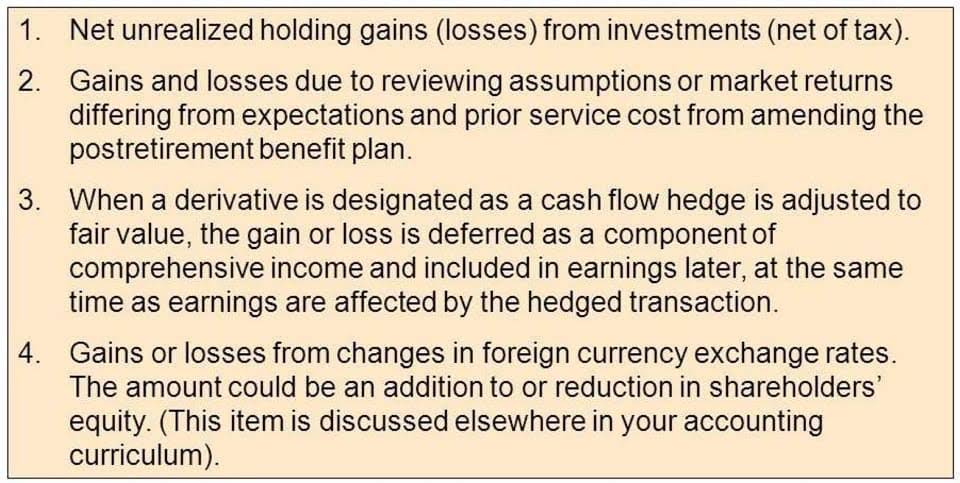You will also need to complete a college course for chartered professional accountants and gain the required professional experience before becoming certified as a CPA. Depending on the region where you plan to become certified, this could take two years or 30 months. Public accounting refers to the services a public accountant or accounting firm offers to prepare financial documents, such as tax returns and budgets. Public accountants, also called chartered professional accountants (CPAs), are qualified to help other businesses and individuals with their tax and other financial needs. These four largest accounting firms conduct audit, consulting, tax advisory, and other services. These firms, along with many other smaller firms, comprise the public accounting realm that generally advises financial and tax accounting.
What Is a Certified Public Accountant (CPA)?
In this action, the Environmental Protection Agency (EPA) is proposing revisions to the preconstruction permitting regulations that apply to modifications at existing major stationary sources in the New Source Review (NSR) program under the Clean Air Act (CAA or Act). A reduction in emissions of volatile organic compounds from discrete operations, units, or activities within the source may not be used to determine if a modification will result in a major modification. The EPA conducted outreach during the development of this proposed rulemaking to environmental nonprofit groups that petitioned the EPA on the project emissions accounting rule, as well as to state permitting authority associations, industry groups, and Tribal groups.
How to become a CPA
Accounting professionals will likely work in both the public and private sectors over the course of their careers. Private accounting is concerned with the inner workings of businesses, https://thebostondigest.com/navigating-financial-growth-leveraging-bookkeeping-and-accounting-services-for-startups/ governments, and agencies. In this role, you may or may not be a certified private accountant – not all private accounting jobs require certification, but it is often preferred.
Key Hard Skills for CPAs
Managerial accounting also encompasses many other facets of accounting, including budgeting, forecasting, and various financial analysis tools. Essentially, any information that may be useful to management falls underneath this umbrella. The Alliance for Responsible Professional Licensing (ARPL) was formed in August 2019 in response to a series of state deregulatory proposals making the requirements https://minnesotadigest.com/navigating-financial-growth-leveraging-bookkeeping-and-accounting-services-for-startups/ to become a CPA more lenient. The ARPL is a coalition of various advanced professional groups including engineers, accountants, and architects. Amanda Bellucco-Chatham is an editor, writer, and fact-checker with years of experience researching personal finance topics. Specialties include general financial planning, career development, lending, retirement, tax preparation, and credit.
Track My Refund: How to Check Your 2024 Tax Refund Status
The primary objective of an audit is to provide assurance to stakeholders, including shareholders, creditors, and the public, that a company’s financial statements are free from material misstatements or fraud. On the other hand, public accountants work for accounting firms that provide services to a diverse clientele. These firms may range from small local practices to global giants known as the Big Four accounting firms.
- The EPA is currently the reviewing authority for PSD and NNSR permits issued in tribal lands and, as such, the revisions being proposed will not impose direct burdens on tribal authorities.
- This ensures that the taxes get filed on time and per the laws of the federal government, which get pretty complicated for private businesses.
- Other countries have equivalent certifications, notably the chartered accountant (CA) designation created in Scotland and now used in many countries.
- Often, public accountants will be promoted more quickly, which allows a public accountant to enter the private accounting field at a higher level than their private peers.
- Regis encourages students who are facing challenges or difficulty to share their concerns with an instructor or advisor and to take advantage of academic support services.
CPA vs. accountant
- They provide expertise on tax planning, compliance, and strategies to optimize tax positions.
- Experience in public accounting and your degree and licensure can make getting hired as a CPA easier.
- The accounting industry thrived in the late 1990s due to the expansion by large accounting firms into various forms of consulting.
- Because of the difficulty that can sometimes arise from criticizing and evaluating other accountants’ work, the public accounting field isn’t for everyone.
- The feedback obtained from those sessions informed aspects of this action as pertains to the revisions to the reasonable possibility in recordkeeping and reporting provisions and will inform public notice requirements that will be proposed as part of a subsequent action.
“Prospective students should assess their interest in accounting, understand the commitment required for a rigorous academic journey and explore the various specializations within accounting to find their niche,” said Regis. If you’re thinking about a bachelor’s degree in accounting, take the time to look at your options and your goals. To aid your research and reflection, Regis encourages students to check out industry websites sites like AICPA & CIMA or the New Hampshire Society of Certified Public Accountants to learn more about the career path.
They also give you an opportunity to gain experience using industry-standard computer applications and software. If a public accounting firm is hired to audit the financial statements of a client, then independence rules restrict the ability of the firm to provide many of the other services just noted. For example, a firm cannot prepare the financial statements of a client and audit those statements. accounting services for startups During an audit, public accountants review a company’s financial statements, internal controls, and accounting procedures. They conduct tests to assess the reliability of financial information and evaluate the risk of material misstatements. Auditors also assess the overall financial health of the company and provide recommendations for improving financial operations and compliance.
- Overall, public and private accounting are different aspects of the same field.
- Public accountants may experience a somewhat difficult work environment that involves travel, long hours, and tight deadlines.
- A public accounting professional also must have a keen understanding of accounting standards for financial statements.
- (iv) The replaced emissions unit is permanently removed from the major stationary source, otherwise permanently disabled, or permanently barred from operation by a permit that is enforceable as a practical matter.
- The agency, calling BF Borgers a “sham audit mill,” said the company and its owner engaged in “deliberate and systemic failures to comply with Public Company Accounting Oversight Board …
Public accounting is the sentinel of financial integrity in the corporate world. At its core, it involves the analysis, verification, and assurance of financial information for public and private entities. Public accountants are the gatekeepers of fiscal transparency, ensuring that financial statements are accurate, reliable, and adhere to regulatory standards. The cost of working with a certified public accountant varies based on a CPA’s experience level, the type of services offered and where the CPA is located. A CPA in Manhattan, New York, for example, will cost more than one in Manhattan, Kansas. (C) The reviewing authority may presume that source-specific allowable emissions for the unit are equivalent to the actual emissions of the unit.










